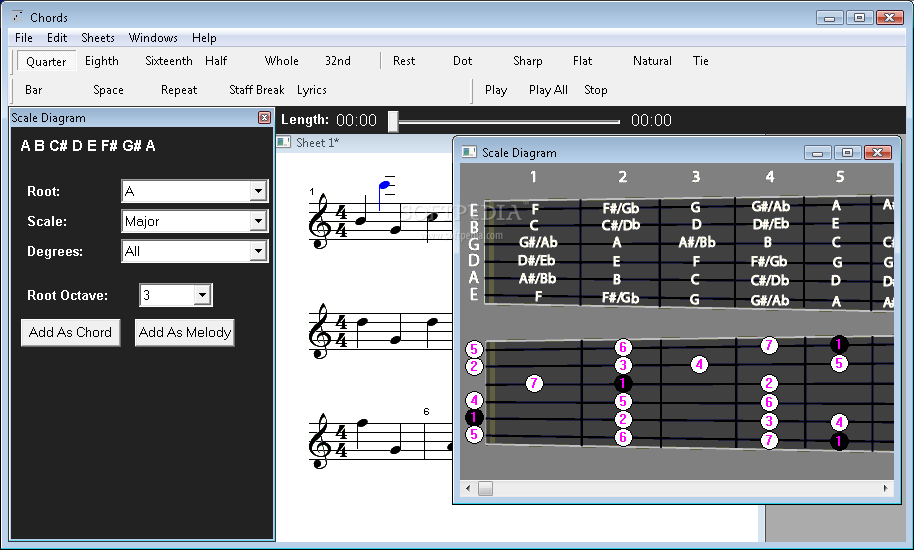
=35.1541 or roughly 35'2" - the curvature would be extremely shallow, but it is a practice example only anyway.īut it starts to make sense to me. So, a screen with, let's say, a chord length of 35' and a chord depth of 1.5' would have a radius of (35^2/8*1.5)+1.5/2=102.85

I can not say that I understand every single step fully, I would have to do a little more reading up, but I understand it far enough to "accept" it and work with it. I can mostly follow your explanation though, so I have a hard time working it out on paper, too. Although I went through this hell at one point in my life long ago, geometry has never been my strength, it really makes my head smoke. It is a lot easier to show this on paper and drawing it out. So the arc length in this example is 62'-9.5" or there abouts.not taking into account stretching and such. Multiply that by Pi/180 and we get 1.042 radians. The Radius and Chord/2 set up a right trangle so that 2*ArcSin (C/2)/R gives us the angle theta in degrees (in this example 59.73 degrees. By plugging in all the numbers we get to radius of the screen to be 60.25-feet. So take a hypothetical set up where the measured chord is 60-feet and the chord depth is 8-feet. The Radius will be equal (C^2/8CD)+ CD/2 where C = the Chord, CD = Chord Depth.
#Chord resolution calculator how to#
If you don't know how to work geometry and algebra it will be get a little tricky to set it up. If you know your geometry you can work back to get R and Theta (note Radians = Pi/180 * Degrees). Where S = Arc length, R = Radius and Theta = the angle of the arc in RADIANS. The length of an arc is calculated as S = R*Theta Probably a very simple case of not seeing the forest because of the trees. Or do they change proportionally, in other words the intersecting straight line from left to right edge will always yield the actual screen size OK, but how do you calculate the relationship between the straight line (an intersection of the circle, or whatever that is called in English) and the chord depth, in this case a segment of the radius. If the screen was curved around 180°, then the relationship between the straight line (in that case, the diameter) and the chord depth (the radius) would be simply 2/1 and the actual screen size simply diameter x π /2. I can work it out by drawing the diagram on paper, but I can't derive a simple formula.

Topic: Absolute screen size and chord depthįor curved screen installations, is there a formula for calculating the actual size of the screen based on the width measured in a straight line across from the left to the right edge and the chord depth, the distance between the phyiscal middle of the screen and the middle point of that straight line? In order to arrive at the actual size of the screen.

#Chord resolution calculator password#
My profile | my password | search | faq & rules | forum homeĪbsolute screen size and chord depth () Home Products Store Forum Warehouse Contact Us Film-Tech Forum ARCHIVE: Absolute screen size and chord depth


 0 kommentar(er)
0 kommentar(er)
